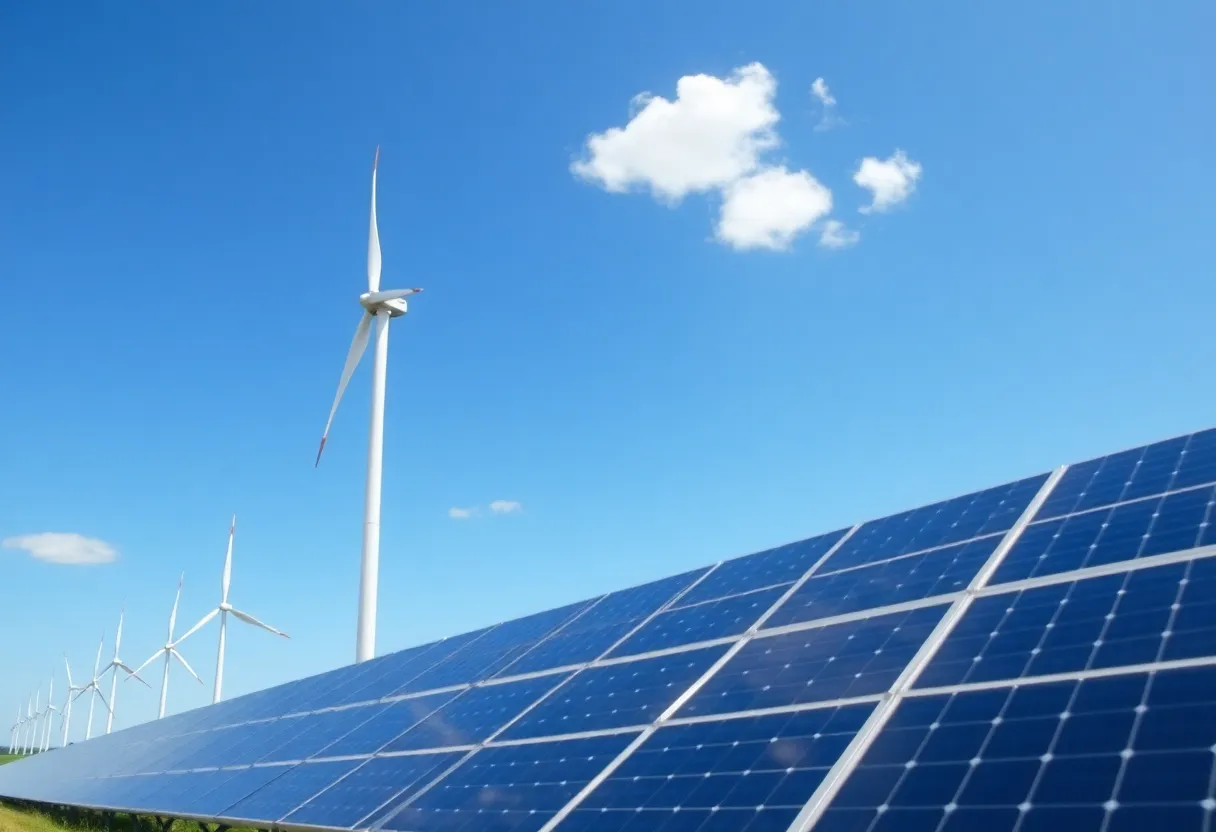News Summary
The IRS has updated guidelines regarding the initiation of construction on wind and solar energy projects. The new rules clarify eligibility for tax credits tied to renewable energy facilities, particularly under Sections 45Y and 48E. Key changes include the retention of the Physical Work Test, modifications to the five percent safe harbor, and strict deadlines for project completion. The revisions aim to align federal incentives with domestic energy production while limiting subsidies for foreign-controlled sources, emphasizing the need for producers to adjust their strategies to comply with updated requirements.
Washington, D.C.,
The Internal Revenue Service (IRS) has issued new guidance modifying the rules for initiating construction on wind and solar energy projects. The release, titled Notice 2025-42, was announced on August 15, 2025, and aims to clarify eligibility criteria for tax credits related to renewable energy facilities under Sections 45Y and 48E of the Internal Revenue Code.
Key Changes and Effective Date
The new notice responds directly to Executive Order 14315, issued on July 7, 2025, which seeks to limit subsidies for foreign-controlled energy sources. The guidance becomes effective immediately for projects that do not begin construction before September 2, 2025, under earlier guidelines. Developers of wind and solar projects must adhere to these updated standards to qualify for federal tax incentives, including the Section 45Y clean electricity production credit and the Section 48E investment credit.
Modification of “Beginning of Construction” Standards
Maintenance of the Physical Work Test
The IRS largely retains the existing Physical Work Test, which requires physical activities of significant nature to be undertaken on or off-site. Examples include excavation, pouring concrete for turbine foundations, assembling solar panel support structures, or other substantial on-site work. The Physical Work Test is a primary criterion to determine whether a project has commenced construction.
Restrictions on the Safe Harbor
Contrary to prior guidance, the five percent safe harbor—which allows projects to qualify if at least five percent of the project’s cost is incurred—will no longer apply to large wind and solar projects. Instead, only small solar projects of 1.5 megawatts (MW) or less can rely on this safe harbor. For larger projects, developers must demonstrate actual physical work through the Physical Work Test to qualify as having begun construction.
Safe Harbor Eligibility
Developers of larger facilities hoping to utilize the safe harbor must have initiated construction before September 2, 2025, under previous guidance. Projects failing to meet this deadline cannot revert to the safe harbor for qualification, emphasizing the importance of early activity to retain eligibility.
Continuity and Deadlines for Project Completion
The continuity requirement remains unchanged: projects must be placed in service within the calendar year that is four years after the physical work begins. This standard ensures project timelines are maintained, aligning with federal tax credit criteria.
Unaddressed Aspects and Future Guidance
The notice does not specify how beginning of construction will be defined under the Foreign Entities of Concern (FEOC) framework, hinting at forthcoming regulations or guidance. Such clarity is anticipated in future IRS publications, especially related to the FEOC Equipment Rule.
Additional Regulations and Project Deadlines
Under the One Big Beautiful Bill Act (OBBBA), wind and solar projects must either begin construction before July 5, 2026 or be operational by December 31, 2027 to qualify for federal tax credits. These deadlines underscore the urgency for developers to advance projects swiftly to benefit from available subsidies.
Historical Context and Regulatory Background
The IRS previously issued guidance on the beginning of construction requirement through Notice 2013-29 and Notice 2018-59. These earlier notices laid the foundation for current standards and clarified what constitutes physical work and project commencement, providing a consistent framework for renewable energy project developers over recent years.
Impacts on Wind and Solar Development
The updated guidance explicitly defines that significant physical work for wind projects includes activities like excavation for turbine foundations and pouring concrete pads. For solar projects, it involves assembling structural supports for solar panels. These definitions aim to prevent projects from claiming initiation without substantial on-the-ground activity, strengthening the integrity of the qualification process.
Future Developments
Further IRS guidance is expected to clarify requirements under the FEOC framework, which could influence project eligibility related to foreign-controlled entities or equipment sourced from certain countries. Such future rules are anticipated to refine the narrow window for project commencement and ensure compliance with national energy and security policies.
Overall, the IRS’s revised standards for beginning construction mark a significant shift toward stricter enforcement of project eligibility criteria for renewable energy tax credits, aligning with broader federal efforts to promote domestic energy sources while restricting foreign influence.
Deeper Dive: News & Info About This Topic
HERE Resources
IRS Tightens Construction Requirements for Wind and Solar Tax Credits
What Are the Top 5 Renovation Trends You Should Consider for Your Home?
Additional Resources
- OurQuadCities: IRS to Keep Wind, Solar Companies from Tax Breaks
- RTO Insider: IRS Guidance on Wind and Solar Credits
- New York Times: IRS Wind, Solar Tax Credits
- PwC: IRS Sheds Light on Construction Rules for Wind and Solar Credits
- Wikipedia: Renewable Energy in the United States
Author: STAFF HERE VIRGINIA BEACH WRITER
The VIRGINIA BEACH STAFF WRITER represents the seasoned team at HEREVirginiaBeach.com, your trusted source for actionable local news and information in Virginia Beach, Virginia Beach City, and beyond, delivering "news you can use" with comprehensive coverage of product reviews for personal and business needs, local business directories, politics, real estate trends, neighborhood insights, and state news impacting the region—supported by years of expert reporting and strong community input, including local press releases and business updates, while offering top reporting on high-profile events like the Virginia Beach Neptune Festival, East Coast Surfing Championship, and military homecoming celebrations, alongside key organizations such as the Virginia Aquarium, Virginia Beach Convention Center, and Oceana Naval Air Station, plus leading businesses in tourism and defense like Busch Gardens and Northrop Grumman, and as part of the broader HERE network including HEREWilliamsburg.com, providing credible, in-depth insights into Virginia's vibrant landscape. HERE Virginia Beach HERE Williamsburg





